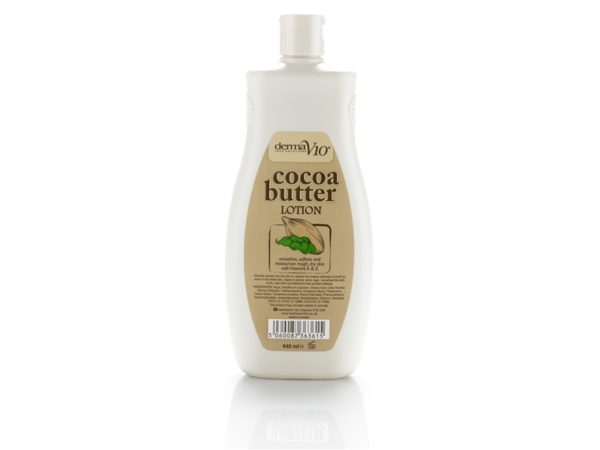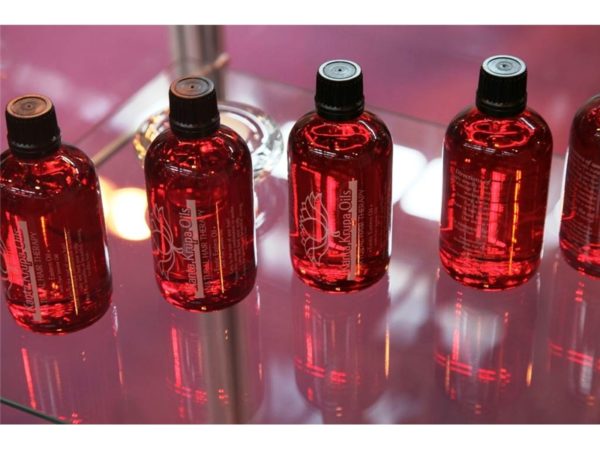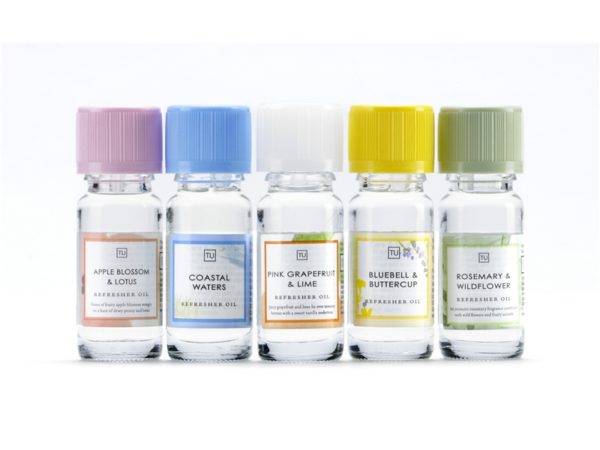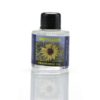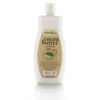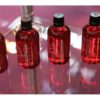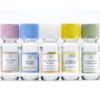Oils and Lotions
Home / Full Product Range / Homeopathy and Cosmetics Labels / Oils and Lotions
Labelservice are experienced suppliers of labels for oils and lotion products. All of our labels are printed fully bespoke to your exact specifications on a range of materials including white and clear PP, PE and vinyls. For protection or for aesthetic reasons they can be finished with matt, satin or gloss varnishes or laminations. Additional features can include gold or silver foil effects, embossing, fragranced inks, and raised tactile print.
The latest digital technology can also offer full colour metallic effect printing, which is an extremely cost effective method of producing stunning, eye catching product labels.
If space is at a premium we can also offer long or short run, multi sort peel and reveal labels.
Please contact us for further information or examples of our work.
Oils and Lotions Labels FAQs
Cosmetic Oils are commonly used to hydrate the face. We supply labels for all types of oils and lotions. Popular oils include argan, rosehip and jojoba oils, body oils, hair care oils, essential oils, lavender oils, massage, oils and cuticle oils.
Cosmetic Lotions are used to hydrate the skin, particularly the hands. Popular lotions include hand lotions, sunscreen lotion, tanning lotion, anti-ageing lotion, tanning lotion, therapeutic lotions for ailments such as acne and psoriasis, hair lotions and scented lotions.
In the UK, there’s a clear mandate for cosmetic products, encompassing oils and lotions, to transparently display their components on their packaging. Here’s an overview:
Ingredients: The rule of thumb is to list components based on their weight, starting with the heaviest. So, the most predominant ingredient is at the top, while the least prevalent is at the bottom.
INCI Terminology: The globally accepted International Nomenclature of Cosmetic Ingredients (INCI) terminology is the go-to for naming ingredients. This universal naming system ensures consistency across borders.
Botanical References: When it comes to plant-based ingredients, the Latin designation is typically used, often accompanied by its everyday English name. An example would be Aloe Barbadensis, commonly known as Aloe Vera.
Potential Allergens: It’s crucial to separately highlight ingredients, especially those in fragrances, known to cause allergic reactions.
Colouring Agents: When colours are added, they might be identified using their specific Colour Index (CI) designation.
Lesser Concentrations: Ingredients that make up less than 1% of the product can be mentioned in no particular order after the more dominant ones.
Purpose of Ingredients: While it’s not obligatory, some brands opt to specify the role of each ingredient, offering consumers a clearer understanding.
Nano-sized Materials: Should a product incorporate nanomaterials, it’s indicated by appending the term ‘nano’ after the ingredient’s name.
Certainly, let’s rephrase the information in a prose format.
In the UK, the oversight of cosmetic items such as oils and lotions, is primarily managed by the Department for Business, Energy & Industrial Strategy (BEIS). This department is the custodian of the Cosmetic Products Enforcement Regulations, which act as the cornerstone legislation ensuring that all cosmetics sold in the UK uphold the highest standards of safety.
Within the BEIS, the Office for Product Safety and Standards (OPSS) plays a pivotal role. This office is tasked with the enforcement of cosmetic regulations, diligently ensuring that products available to consumers adhere to the required safety and compliance standards. Before any cosmetic product hits the shelves, it undergoes rigorous safety assessments. These evaluations are meticulously conducted by experts in the field, ensuring that every product is fit for consumer use.
Following the UK’s departure from the EU, the nation has diverged from the European Union’s Cosmetic Products Regulation (EC) No 1223/2009. While the UK has charted its regulatory path, many foundational principles from the EU regulation continue to be adopted.
Also, while they don’t possess regulatory powers, entities such as the Cosmetic, Toiletry & Perfumery Association (CTPA) hold significant influence. They offer invaluable guidance and support to businesses in the cosmetics sector.
Firstly, the name and address of the responsible person, usually the manufacturer or importer, must be clearly displayed. This ensures that there’s a point of contact should any issues or queries arise regarding the product.
Next, the country of origin is essential, especially if the product is imported from outside the UK. This provides consumers with the knowledge of where the product has been sourced or manufactured.
The net content, measured in grams or millilitres, must be indicated on the packaging. This gives consumers clarity on the quantity of the product they are purchasing.
A crucial aspect of the label is the ingredient list as explained above.
For products with a limited shelf life, a ‘best before’ date is required. Additionally, if there are specific conditions for the product’s storage or instructions on its use to maintain its promised effect, these must be clearly mentioned, also.
Lastly, the batch number or lot number is a mandatory inclusion. This is especially vital for traceability, allowing manufacturers to track and recall a specific batch if necessary.
Oil and lotion labels are typically exposed to various conditions such as moisture, friction, and temperature fluctuations. As a result, the materials use for these labels must withstand these challenges.
Polypropylene (PP) is a popular choice for many cosmetic labels due to its durability and resistance to water. They don’t absorb moisture, which means the labels won’t smudge or fade when exposed to the oils and lotions. Polyethylene (PE) Labels are flexible and resistant to moisture, making them suitable for squeezable bottles and containers. Polyester (PET) are resistant to tearing, which makes them ideal for products that undergo frequent handling and also resist fading from UV light. Vinyl is a versatile material that’s also resistant to moisture and chemicals. It’s particularly useful for products that might be stored in wet environments, such as bathrooms or spas.
Labelservice are experienced suppliers of labels for oils and lotion products. All of our labels are printed fully bespoke to your exact specifications on a range of materials including white and clear PP, PE and vinyls. For protection or for aesthetic reasons they can be finished with matt, satin or gloss varnishes or laminations. Additional features can include gold or silver foil effects, embossing, fragranced inks, and raised tactile print.
The latest digital technology can also offer full colour metallic effect printing, which is an extremely cost effective method of producing stunning, eye catching product labels.
If space is at a premium we can also offer long or short run, multi sort peel and reveal labels.
Please contact us for further information or examples of our work.
Oils and Lotions Labels FAQs
Cosmetic Oils are commonly used to hydrate the face. We supply labels for all types of oils and lotions. Popular oils include argan, rosehip and jojoba oils, body oils, hair care oils, essential oils, lavender oils, massage, oils and cuticle oils.
Cosmetic Lotions are used to hydrate the skin, particularly the hands. Popular lotions include hand lotions, sunscreen lotion, tanning lotion, anti-ageing lotion, tanning lotion, therapeutic lotions for ailments such as acne and psoriasis, hair lotions and scented lotions.
In the UK, there’s a clear mandate for cosmetic products, encompassing oils and lotions, to transparently display their components on their packaging. Here’s an overview:
Ingredients: The rule of thumb is to list components based on their weight, starting with the heaviest. So, the most predominant ingredient is at the top, while the least prevalent is at the bottom.
INCI Terminology: The globally accepted International Nomenclature of Cosmetic Ingredients (INCI) terminology is the go-to for naming ingredients. This universal naming system ensures consistency across borders.
Botanical References: When it comes to plant-based ingredients, the Latin designation is typically used, often accompanied by its everyday English name. An example would be Aloe Barbadensis, commonly known as Aloe Vera.
Potential Allergens: It’s crucial to separately highlight ingredients, especially those in fragrances, known to cause allergic reactions.
Colouring Agents: When colours are added, they might be identified using their specific Colour Index (CI) designation.
Lesser Concentrations: Ingredients that make up less than 1% of the product can be mentioned in no particular order after the more dominant ones.
Purpose of Ingredients: While it’s not obligatory, some brands opt to specify the role of each ingredient, offering consumers a clearer understanding.
Nano-sized Materials: Should a product incorporate nanomaterials, it’s indicated by appending the term ‘nano’ after the ingredient’s name.
Certainly, let’s rephrase the information in a prose format.
In the UK, the oversight of cosmetic items such as oils and lotions, is primarily managed by the Department for Business, Energy & Industrial Strategy (BEIS). This department is the custodian of the Cosmetic Products Enforcement Regulations, which act as the cornerstone legislation ensuring that all cosmetics sold in the UK uphold the highest standards of safety.
Within the BEIS, the Office for Product Safety and Standards (OPSS) plays a pivotal role. This office is tasked with the enforcement of cosmetic regulations, diligently ensuring that products available to consumers adhere to the required safety and compliance standards. Before any cosmetic product hits the shelves, it undergoes rigorous safety assessments. These evaluations are meticulously conducted by experts in the field, ensuring that every product is fit for consumer use.
Following the UK’s departure from the EU, the nation has diverged from the European Union’s Cosmetic Products Regulation (EC) No 1223/2009. While the UK has charted its regulatory path, many foundational principles from the EU regulation continue to be adopted.
Also, while they don’t possess regulatory powers, entities such as the Cosmetic, Toiletry & Perfumery Association (CTPA) hold significant influence. They offer invaluable guidance and support to businesses in the cosmetics sector.
Firstly, the name and address of the responsible person, usually the manufacturer or importer, must be clearly displayed. This ensures that there’s a point of contact should any issues or queries arise regarding the product.
Next, the country of origin is essential, especially if the product is imported from outside the UK. This provides consumers with the knowledge of where the product has been sourced or manufactured.
The net content, measured in grams or millilitres, must be indicated on the packaging. This gives consumers clarity on the quantity of the product they are purchasing.
A crucial aspect of the label is the ingredient list as explained above.
For products with a limited shelf life, a ‘best before’ date is required. Additionally, if there are specific conditions for the product’s storage or instructions on its use to maintain its promised effect, these must be clearly mentioned, also.
Lastly, the batch number or lot number is a mandatory inclusion. This is especially vital for traceability, allowing manufacturers to track and recall a specific batch if necessary.
Oil and lotion labels are typically exposed to various conditions such as moisture, friction, and temperature fluctuations. As a result, the materials use for these labels must withstand these challenges.
Polypropylene (PP) is a popular choice for many cosmetic labels due to its durability and resistance to water. They don’t absorb moisture, which means the labels won’t smudge or fade when exposed to the oils and lotions. Polyethylene (PE) Labels are flexible and resistant to moisture, making them suitable for squeezable bottles and containers. Polyester (PET) are resistant to tearing, which makes them ideal for products that undergo frequent handling and also resist fading from UV light. Vinyl is a versatile material that’s also resistant to moisture and chemicals. It’s particularly useful for products that might be stored in wet environments, such as bathrooms or spas.



